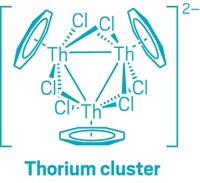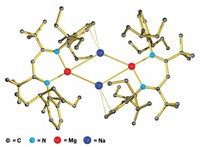Advertisement
Grab your lab coat. Let's get started
Welcome!
Welcome!
Create an account below to get 6 C&EN articles per month, receive newsletters and more - all free.
It seems this is your first time logging in online. Please enter the following information to continue.
As an ACS member you automatically get access to this site. All we need is few more details to create your reading experience.
Not you? Sign in with a different account.
Not you? Sign in with a different account.
ERROR 1
ERROR 1
ERROR 2
ERROR 2
ERROR 2
ERROR 2
ERROR 2
Password and Confirm password must match.
If you have an ACS member number, please enter it here so we can link this account to your membership. (optional)
ERROR 2
ACS values your privacy. By submitting your information, you are gaining access to C&EN and subscribing to our weekly newsletter. We use the information you provide to make your reading experience better, and we will never sell your data to third party members.
Physical Chemistry
Xenon Perovskites
Inorganic Chemistry: Noble Gas Enlarges Its Bag of Tricks, Forms Framework Compounds
by Mitch Jacoby
November 9, 2015
| A version of this story appeared in
Volume 93, Issue 44
Xenon has done it again—shown itself capable of forming interesting chemical compounds, that is. This time, those compounds take the form of perovskite crystals with the general formula, KMXeNaO6, where M refers to calcium or other group II elements (Angew. Chem. Int. Ed. 2015, DOI: 10.1002/anie.201506690). The study shows that the noble gas, which was long thought incapable of forming molecules, actually forms quite an assortment of compounds. Sergey N. Britvin of Saint Petersburg State University and coworkers treated anhydrous sodium perxenate, Na4XeO6, with KOH solutions of the nitrates of calcium, barium, and strontium. The procedure yielded three-dimensional KMXeNaO6 perovskite framework compounds composed of alternating, corner-sharing XeO6 and NaO6 octahedrons. Xenon’s ability to work its way into perovskites may provide clues about the “missing xenon paradox.” Earth’s atmosphere contains far less xenon than expected based on analysis of ancient meteorites. Given that the main silicate in Earth’s interior is thought to be a MgSiO3 perovskite, and given that elevated temperatures and pressures induce xenon solubility in silicates, perhaps some of the missing xenon is hiding far below Earth’s surface, the team suggests.





Join the conversation
Contact the reporter
Submit a Letter to the Editor for publication
Engage with us on Twitter